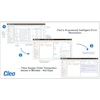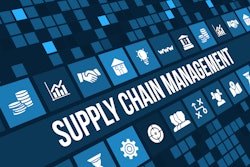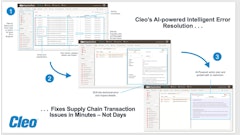
Companies continue to pitch their "AI-powered procurement solutions." Each one uses slightly different terminology – "intelligent agents," "autonomous AI," "smart assistants" – but none of them could clearly explain what their technology actually does differently from basic automation.
This confusion isn't just annoying; it's expensive. Some procurement teams spend months implementing systems that don’t match their expectations because nobody took the time to understand what they were actually buying. The problem isn't that these technologies don't work; it's that most people don't understand the fundamental differences between what's available today.
The spectrum of AI automation
Rather than getting caught up in vendor terminology, it helps to think about AI tools on a spectrum of autonomy. On one end, guided AI requires constant human input. On the other end, autonomous systems can make decisions and take actions independently.
Most procurement teams are familiar with guided AI, even if they don't call it that. These are systems that help complete tasks faster but still need humans to make the important decisions. Think about how GPS works in your car; it shows you route options and guides you turn by turn, but you still control the steering wheel.
Here’s one procurement example: Your system can scan thousands of potential suppliers for a specific component, filter them by your criteria, and present a ranked list with pricing and delivery information. But you still decide which supplier to choose and negotiate the final terms.
Autonomous AI operates more like cruise control or autopilot. You set the destination and basic parameters, then the system handles the details of getting there. In procurement terms, this means systems that can evaluate options, make decisions, and execute transactions without waiting for human approval on routine purchases.
When guided AI makes sense
For most procurement teams starting their AI journey, guided systems offer the best balance of efficiency gains and risk management. These tools excel at eliminating the tedious parts of sourcing and purchasing while keeping human oversight where it matters most.
Take an example that would be common to an IT director – outfitting new employees with laptops. With guided AI, they can type something like "I need 10 Lenovo laptops for these employees by next Thursday based on our usual specifications." The system checks approved vendors, gets current pricing, verifies availability, and presents options for quick approval. What used to be a half-day project becomes a 10-minute task.
The system handles the data gathering and analysis, but humans make the judgment calls about supplier selection, timing, and any specification adjustments needed.
The promise and reality of autonomous systems
Autonomous procurement AI sounds appealing. Imagine systems that handle routine purchasing decisions without human intervention, automatically switching suppliers when problems arise, or renegotiating terms based on market conditions. Some companies are already using these approaches for specific categories.
During COVID-19 crisis response, one mortuary services company needed to rapidly scale their operations as cases increased from 25 to over 100 per day. Their autonomous ordering system recognized the spike in demand, calculated additional equipment needs, sourced cooling units from backup suppliers, and processed purchase orders – all without waiting for human approval. This speed gave them priority access to critical equipment when competitors were still trying to figure out their requirements.
But autonomous systems also create new challenges. When decisions happen without human oversight, you need strong governance frameworks to prevent problems. What happens when the system chooses a cheaper supplier that delivers poor quality? How do you maintain supplier relationships when algorithms handle all the interactions?
The data foundation challenge
Both guided and autonomous AI depend on clean, accurate data to function effectively. This is where many implementations fail, regardless of how sophisticated AI technology might be.
Some systems recommend suppliers that were no longer available because vendor databases weren't updated. Others consistently suggest inappropriate products because specifications weren't standardized across departments. AI can only work with the information you give it.
Before implementing any AI system, procurement teams need to audit their data quality. This means standardizing product catalogs, updating supplier information, and establishing clear approval workflows. It's not glamorous work, but it's essential for getting value from AI investments.
Making the right choice for your team
The decision between guided and autonomous AI shouldn't be based on what sounds more impressive. It should be based on your team's current capabilities, data quality, and risk tolerance.
Start with guided AI if you're dealing with inconsistent data, have complex supplier relationships that require human judgment, or need to maintain tight control over purchasing decisions. These systems can deliver immediate productivity improvements while you build the foundation for more advanced automation.
Consider autonomous AI for high-volume, low-risk categories where you have standardized specifications, reliable suppliers, and clear decision criteria. Office supplies, common maintenance items, and standard IT equipment are good candidates for autonomous purchasing.
Implementation lessons from the field
The most successful AI implementations follow a similar pattern. They start small, focus on specific use cases, and gradually expand as teams build confidence with the technology.
One company began by automating their paper goods ordering. The AI system monitors inventory levels, tracks usage patterns, and automatically reorders supplies when stock runs low. After six months of smooth operation, this company expanded to include cleaning supplies, then basic equipment.
The key was starting with products that have standard specifications, reliable suppliers, and predictable demand patterns. Success with these simple categories built trust and demonstrated value before moving to more complex purchasing decisions.
Looking beyond the hype
The procurement teams getting real value from AI aren't the ones chasing the latest buzzwords. They're the ones that understand their current processes, identify specific problems worth solving, and choose tools that match their actual needs.
Whether you call it guided AI, autonomous AI, or just "automation that actually works," the goal remains the same: freeing up your team to focus on strategic work that requires human judgment and creativity.
The technology will keep evolving, and the terminology will keep changing. But the fundamental questions remain constant: What problems are you trying to solve? What level of control do you need to maintain? And do you have the data foundation to support whatever approach you choose?
Answer those questions honestly, and you'll cut through the vendor noise to find AI tools that actually improve how procurement teams operate.




















